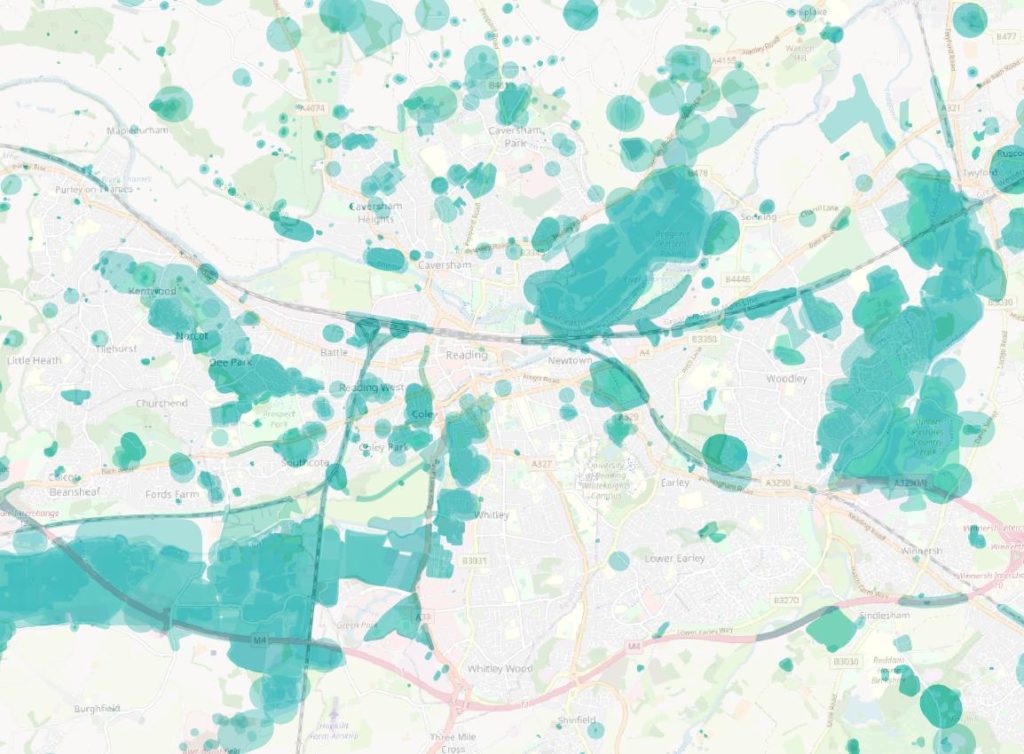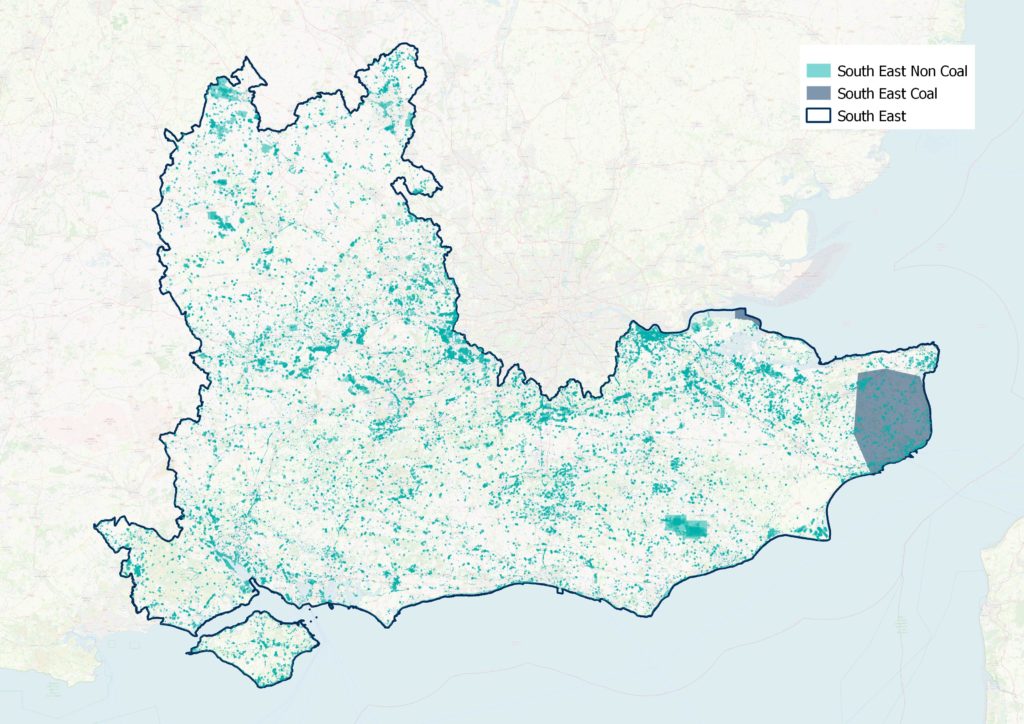Coal versus chalk and other mineral extraction in the South East of England
Groundsure blog: The South East of England has, like all other regions of the UK, witnessed a legacy of historic mining and mineral extraction.
In this blog, I wanted to share some information as to the extent to which both coal and other rock and mineral resources have been extracted.
Where is the coal?
Unlike many areas where coal mining has been prolific, such as in South Wales, Bristol, the West Midlands, large parts of the North of England and in Scotland, the workings for coal occupy a relatively small enclave within the extreme South Eastern part of the UK within the Eastern part of Kent.
The coal workings in Kent are relatively modern with various collieries in operation from 1890 until 1989. It was whilst attempting to build a Channel Tunnel for the first time in 1880 work was halted due to fears around national security and rather than standing idle the workers decided to drill boreholes to investigate the geology of Kent when they discovered coal. It was not until 1912 until commercial coal was raised to the surface [1].
Kent coal was difficult to extract, because the seams were deep and there were problems with water inundating the excavations and as a result, it was costly to mine. There were a number of collieries affected by these testing conditions with various levels of success in extracting coal such as Shakespeare Colliery, Snowdown Colliery, Tilmanstone Colliery Chislet and Betteshanger Colliery [1].
For the purposes of both residential and commercial conveyancing property transactions, the legacy that Kent coal has left us is assessed by carrying out a CON29M Official Coal Mining Search where a set of prescribed questions set by The Law Society are answered. Raw data provided by The Coal Authority under a digital licence agreement allows Groundsure to analyse and interpret the data converting the information into an interpreted report. Under Law Society guidelines, licenced Coal Authority data must be used in the preparation of an official CON29M report therefore the same data is used by all providers including The Coal Authority.
The team at Groundsure has worked out that there are some 78,409 properties in the coal reporting area in the South East of England.
What else was mined or extracted?
As you can see from the accompanying image, when you show the extent of property potentially affected by coal mining this is dwarfed by the extent of mining and extraction that has taken place for minerals other than coal in the South East.
When the Groundsure database is queried there are some 2,206,959 properties that lie within the non-coal area. This includes chalk, ironstone, sand and gravel and fullers earth to name a few. I will describe a couple of examples.
Sand and gravel
Sand and gravel has been extensively extracted and this continues today in Surrey at Thorpe Hersham and Runfold. Many of the pits have been worked out and have been repurposed as nature reserves or incorporated into theme parks such as Thorpe Park [2].
Chalk workings
Chalk has been extracted and used since before the Roman times, starting off as primitive bell pits to more intricate and extensive denholes where a narrow shaft entrance leads down to elaborate chambers of chalk extraction. The extent to which the early pits could be mined out was determined by practicalities of excavation as well as safety implications – but could be worked to around 15 to 20 metres. When a bell pit had reached its limit of excavation, a new pit was excavated nearby and the process started again. Most of the chalk mines were not well documented, being discovered following settlement and subsidence events or during the investigation of sites for development.
Chalk workings are widespread in the South East of England and have been discovered extensively in for example the North and South Downs and in Reading . In Kent there are some 1,184 chalk mine cavities recorded in the Stantec Mining Cavities database alone [3].

Chalk workings in Reading
Whilst chalk operations have now ceased, there are plenty of examples where the legacy of the workings still show telltale signs of their existence, such as the presence of old lime kilns and old railway lines heading to an apparent dead end when in fact the railway line continued underground into a hillside.
Ironstone workings
The Groundsure database reveals that extensive ancient ironstone workings can be found in the Haslemere and Petworth areas which manifest themselves as a series of early bell pits, with numbers of narrow shaft collars lying adjacent to each other.
In conclusion and even with these modest examples it demonstrates that both ancient and modern mining has taken place to win various rocks and minerals from the ground, the surface and using underground methods of extraction. It is for this reason that it is wise to obtain a relevant and comprehensive mining search. For those busy conveyancers it is no easier than ordering a single report from the GeoRisk product suite.
References:
1. https://www.dovermuseum.co.uk/Exhibitions/Coal-Mining-in-Kent/History/The-end-of-Kent-Coal.aspx
2. http://www.sihg.org.uk/books/SurreyIndPast.pdf
3. D.P.Giles and J S Griffiths: Geological Hazards in the UK:their occurrence, monitoring and mitigation. Geological Society Engineering Geology Special Publication No.29 2020
Kindly shared by Groundsure
Main article photo courtesy of Pixabay

















